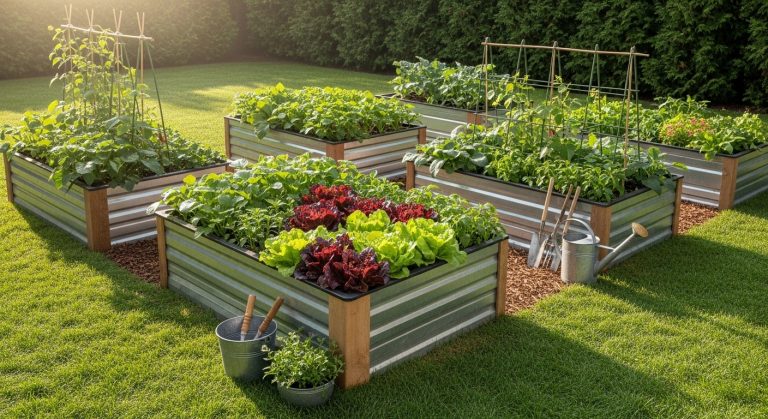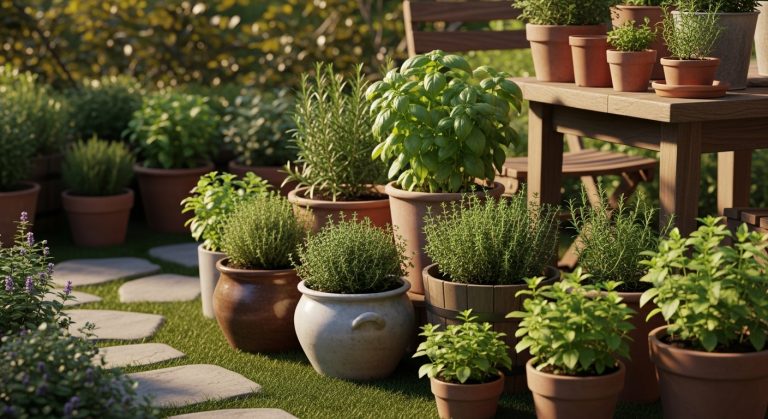Raised Garden Beds Deer Proof: 15 Smart Ways to Outsmart Hungry Visitors
If you’ve ever spent hours planting tomatoes, lettuce, and flowers—only to wake up to a garden buffet where deer were the uninvited guests—you know the frustration. Deer are adorable… from a distance. But when they start munching your raised garden beds like it’s their personal salad bar, it’s time to act.
That’s where raised garden beds deer proof designs come in. They’re not just about looking pretty—they’re about protecting your hard work. And guess what? You don’t need to build a fortress. With a few clever tweaks and thoughtful layouts, you can enjoy a thriving garden and keep those four-legged grazers out.
Let’s explore 15 deer-proof raised garden bed ideas that actually work (and look great doing it).
1. The Classic Enclosed Deer-Proof Garden Bed

If you want something that simply works, start with an enclosed raised bed. It’s a no-nonsense solution that provides a physical barrier while keeping the aesthetics intact.
Pros:
- Total protection from deer and rabbits.
- Easy to customize height and frame style.
- Enhances microclimate, promoting healthy growth.
Cons:
- Requires extra materials (like mesh or polycarbonate panels).
- Can be a bit more expensive initially.
Pro Tip: Use wire mesh with 2-inch gaps—it blocks deer but lets pollinators through.
2. Tall Timber Beds – Simple Yet Effective

Height matters more than you think. Deer can jump high, but they usually don’t bother if it looks too tricky. Building raised garden beds about 36–40 inches tall deters them effortlessly.
Pros:
- Acts as a natural deterrent.
- Adds ergonomic comfort for gardeners.
- Great for deep-rooted plants like carrots and potatoes.
Cons:
- Uses more soil and materials.
Fun fact: According to the University of Vermont Extension, deer prefer feeding on plants within 2–3 feet of the ground—so a taller bed literally takes dinner off their plate.
3. Deer-Proof Fencing with a View

Want protection and style? Install deer fencing around your raised beds. Transparent mesh fencing or black polypropylene blends seamlessly with the garden.
Pros:
- Nearly invisible design.
- Long-lasting and lightweight.
- Keeps other critters out too.
Cons:
- Needs secure anchoring to withstand strong winds.
Use an angled or double fence layout—deer hate jumping where depth perception gets tricky.
4. Garden Bed Tunnels with Netting

These arched tunnels are practical and Instagram-worthy. Add a metal hoop frame and stretch deer netting or shade cloth over it.
Pros:
- Protects from deer and birds simultaneously.
- Regulates light and temperature.
- Easy to lift for garden access.
Cons:
- Limited airflow if sealed too tightly.
It’s like giving your plants a personal greenhouse that doubles as armor.
5. Combination Barriers – The “Layered Defense” Approach

Think of this one as a security system: fencing, height, and plant deterrents all working together. Layered defenses confuse deer and make your beds look thoughtfully designed.
Pros:
- Maximum protection.
- Aesthetically rich and structured.
- Works even in high-deer-traffic areas.
Cons:
- Takes planning and budget to execute.
Mix tall frames, gravel paths, and fragrant herbs to make your garden both beautiful and unappealing to deer.
6. Raised Stone Beds with Deer Deterrent Texture

Deer aren’t fond of rough textures. So why not use stone or brick garden walls? They’re timeless, durable, and naturally discourage animals from climbing in.
Pros:
- Weather-resistant and elegant.
- Virtually maintenance-free.
- Adds rustic charm.
Cons:
- Heavy and requires foundation support.
Architectural landscape blogs like Houzz recommend stone beds for both aesthetic and functional durability.
7. Deer-Proof Vertical Garden Walls

If you can’t beat them on the ground, go vertical. Wall planters or tiered beds take your plants out of reach.
Pros:
- Perfect for small yards.
- Prevents ground-level damage.
- Creates modern, layered aesthetics.
Cons:
- Limited space for deep-rooted crops.
Try stacking wooden crates or modular garden frames—it’s efficient and space-savvy.
8. Aromatic Plant Borders

Deer hate strong scents. Border your raised beds with herbs like lavender, sage, or rosemary. It’s natural defense with fragrance included.
Pros:
- Adds beauty and scent.
- Repels deer without chemicals.
- Attracts pollinators.
Cons:
- Needs periodic trimming.
According to Penn State Extension, deer avoid aromatic oils that overwhelm their sensitive noses—so plant strategically.
9. Motion-Activated Sprinkler Systems

Now we’re getting high-tech. Add motion-activated sprinklers around your raised beds to startle deer.
Pros:
- Humane and automatic deterrent.
- Covers wide areas.
- Great for nighttime protection.
Cons:
- Requires water pressure and occasional maintenance.
It’s basically home defense with a splash of fun.
10. Raised Beds with Trellis Shields

Pair your raised bed with climbing trellises that double as a partial barrier. Bonus: they add vertical beauty.
Pros:
- Supports vining crops.
- Partially shields the bed perimeter.
- Enhances garden architecture.
Cons:
- Doesn’t fully block larger deer.
For a sleek look, use powder-coated steel trellises—they last for years.
11. Gravel or Mulch Perimeter

Deer dislike unstable footing. Create a gravel or wood chip border around your raised garden beds to discourage their approach.
Pros:
- Adds clean design lines.
- Helps with drainage.
- Natural deterrent without fencing.
Cons:
- Needs refreshing each season.
Bonus: It also prevents weed growth—two wins in one!
12. Smart Lighting Around Raised Beds

Add solar-powered lights that automatically turn on at dusk. Deer are cautious and dislike bright movement.
Pros:
- Energy-efficient deterrent.
- Adds ambience at night.
- Simple installation.
Cons:
- Deer can get used to static light—try flashing ones.
It’s subtle, elegant, and practical—garden glow-up guaranteed.
13. Raised Beds with Reflective Tape and Motion Decor

No need to go high-tech when old-school tricks work. Hang reflective ribbons, CDs, or spinners near your raised beds.
Pros:
- Cheap and easy to install.
- Visually deters deer.
- Adds dynamic movement to your garden.
Cons:
- Wind-reliant.
- Not ideal for every aesthetic.
Fun twist: Choose metallic colors that glint stylishly under sunlight.
14. Double-Layer Garden Layout

Design two parallel raised beds with a narrow path in between. Deer hesitate to jump into confined spaces.
Pros:
- Space-efficient layout.
- Prevents deep jumps.
- Easier for you to manage plants.
Cons:
- Requires careful layout planning.
This setup looks clean and modern—perfect for architectural gardens.
15. The Ultimate DIY Deer-Proof Greenhouse Bed

Combine it all—height, mesh, doors, and automation. It’s part raised bed, part greenhouse, and totally deer-proof.
Pros:
- Year-round gardening potential.
- Total protection from deer, birds, and pests.
- Stylish statement piece.
Cons:
- Costly upfront but pays off long-term.
If you’re serious about growing in peace, this is the ultimate garden fortress that doesn’t feel like one.
Final Thoughts
Deer may be cute, but your lettuce deserves to live too. Whether you choose a tall timber frame, a stone border, or a high-tech sprinkler setup, deer-proof raised garden beds let you reclaim control of your garden.
Remember, the goal isn’t to fight nature—it’s to outsmart it with design and strategy. So, pick the style that fits your space and aesthetic, then sit back and enjoy a garden that’s finally yours again.

Ashley Ellison is a skilled writer and avid bowler. Her passion for storytelling and dedication to the sport have led her to participate in various national bowling leagues. With a unique combination of talents, Ashley approaches every challenge with creativity and a relentless drive to succeed.






